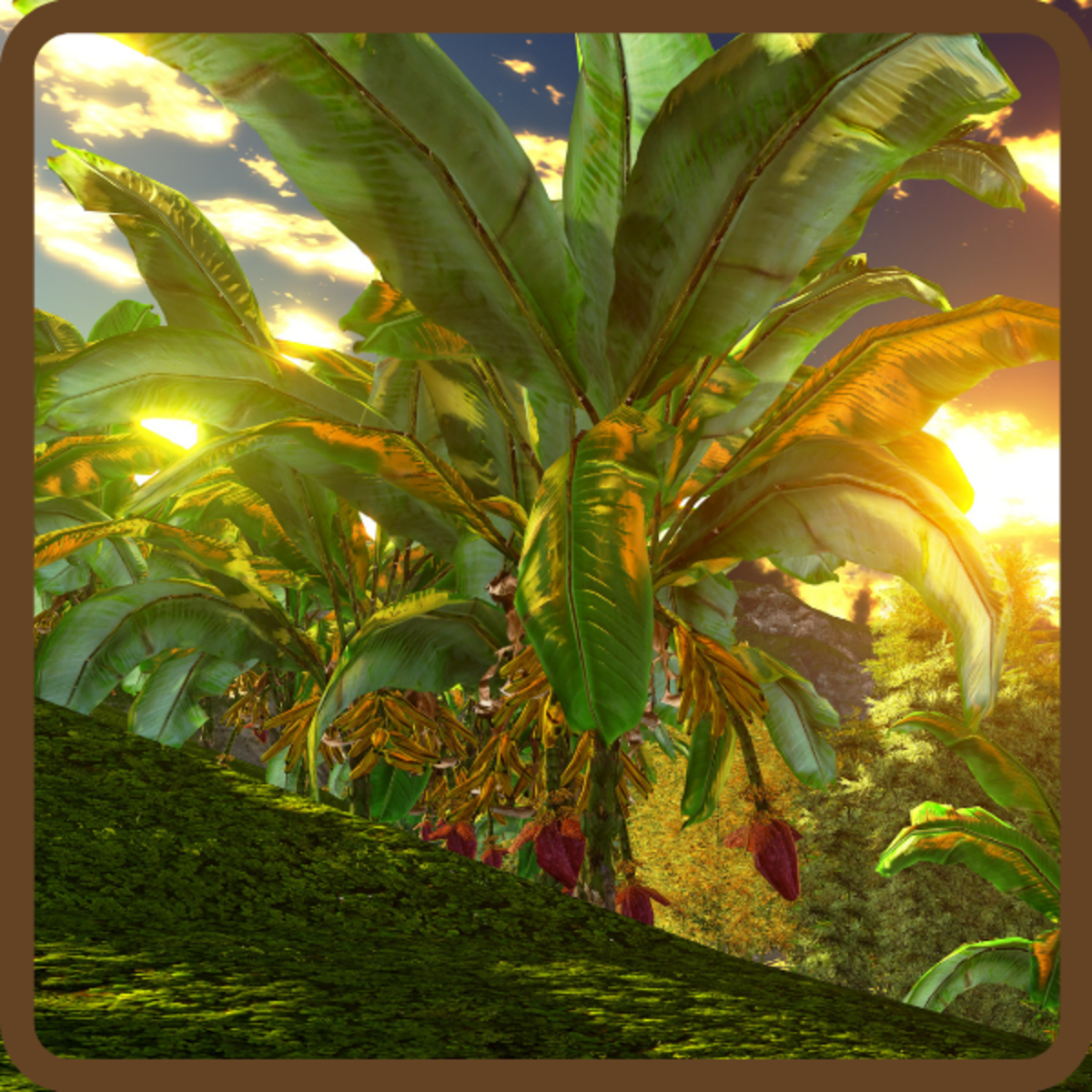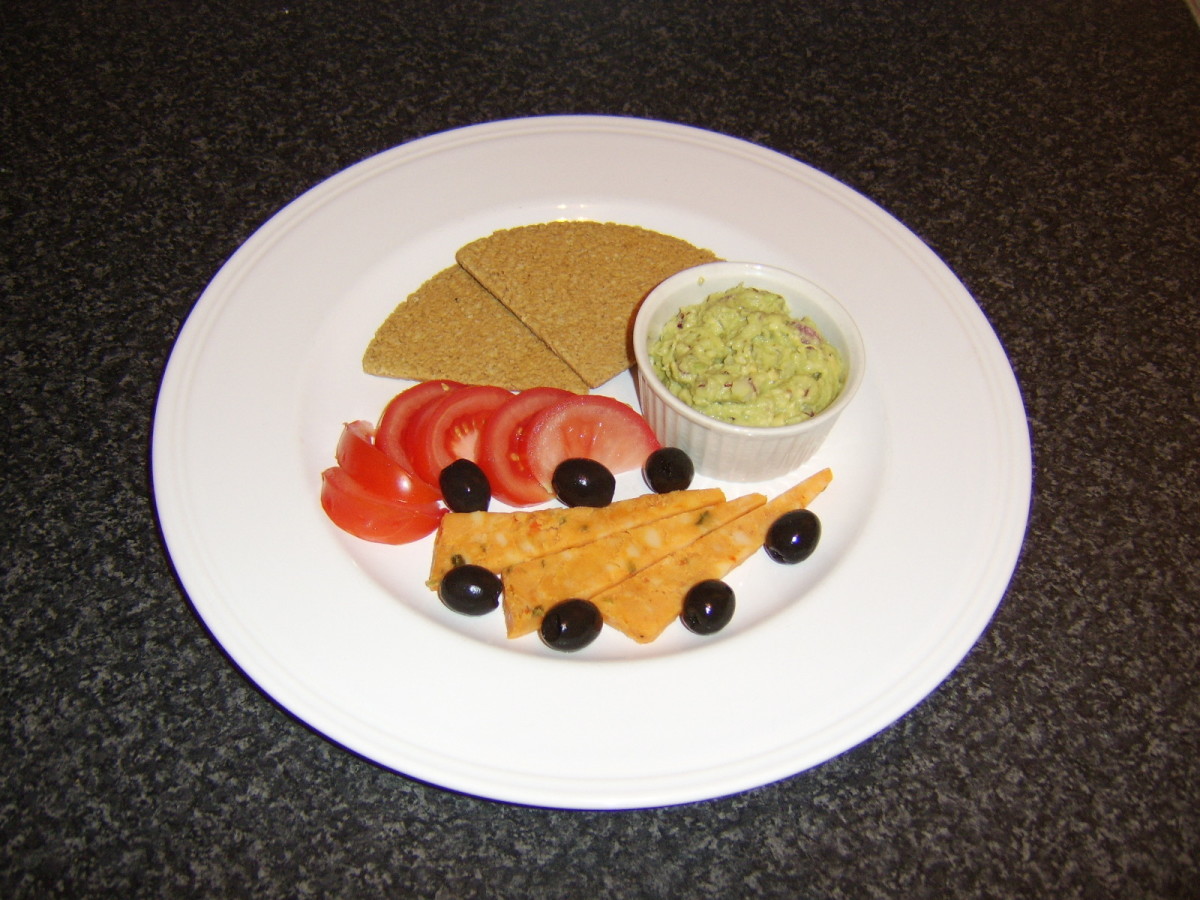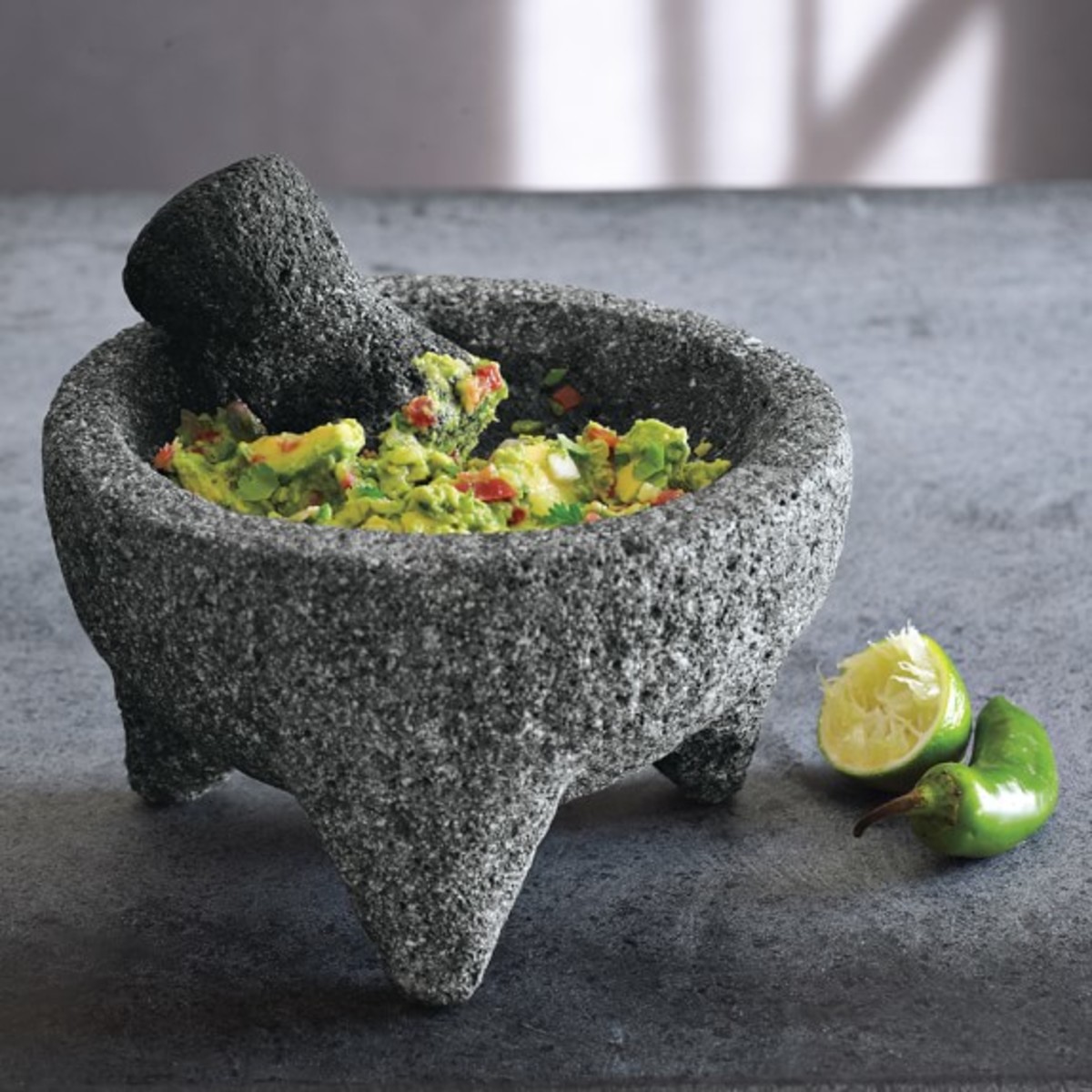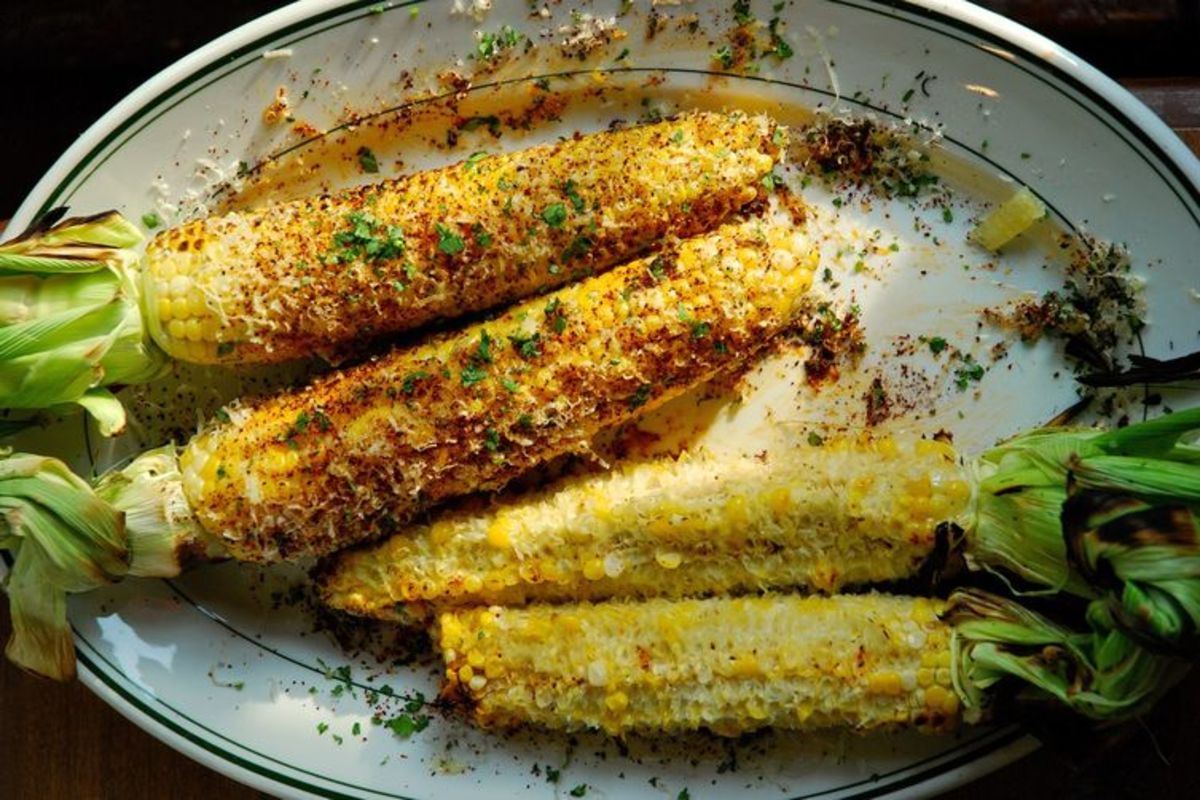Going Bananas! Great Ways to Use This Traditional Latino Staple
Bananas are ubiquitous in the US, gracing market shelves everywhere. Easily found, cheap and tasty, most shoppers take a few home when they buy food for the family. Without going into detail about their nutritional value, it is generally known that bananas are a very healthy and easily digested food. They have become so common that most people think all bananas are the same, and have no idea that what they are eating is only one variety of a large family of similar fruits, and that there are many ways to prepare and serve them.
Cavendish: King of Bananas
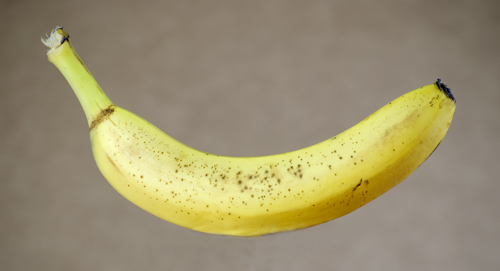
A Banana is a Banana, is a Banana: the Cavendish
Bananas are broadly classified into two groups: those that are eaten as fresh fruit, and those that are used for cooking. Of the fresh fruit varieties, the most common found in the US and most banana-importing countries is the Cavendish. This is the normal canary-yellow banana that commonly has a large display in supermarkets. Cavendish bananas are picked green and shipped worldwide, left to ripen on the market shelves. As they ripen, the sugar grows more concentrated and the fruit becomes sweeter. Cavendish bananas are at their best when dappled with small brown "freckles", but must be eaten soon or they will rapidly over-ripen. In Honduras bananas of this variety are known as "minimos", and are universally popular.
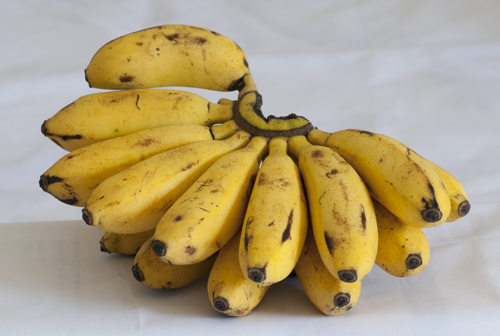
Lady-Fingers: Good Things in Small Packages!
Another variety sometimes found in US markets is the Lady-Finger. True to their name, they are not much bigger than an average finger, if that much. These are very popular in Central America because they have a more intense flavor than the Cavendish, and are sweeter. The problem is, once they're peeled there's not much left, but kids love them!
Red Caribes
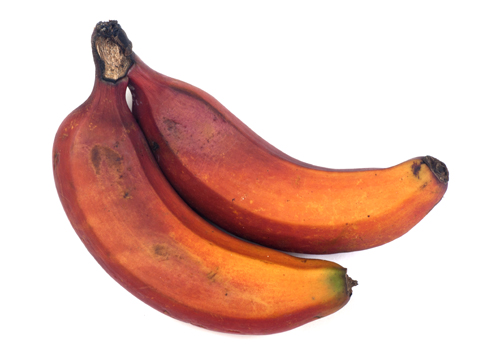
Red Caribe - Banana of a Different Color
An exotic variety not often found in the United States is the Red Caribe. As the name implies, they can be anywhere from a dark orange to a vivid red color. They are sweet, but not as intensely flavored as the Lady-Finger, with a taste decidedly different from the Cavendish. If you can find them, they are well worth a try for a different taste.
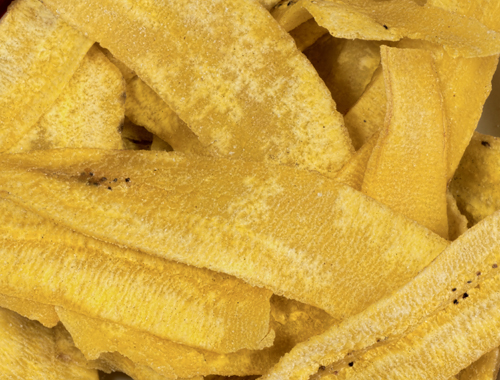
Bananas - Chips, Strips & Dips
Sometimes the fresh fruit varieties are sliced and dried into banana chips, or cut into very thin strips and dried making a snack resembling potato chips, even so far as being salted and eaten with dip.
These dried strips are extremely popular in Central America, and are sold in bags in nearly every market.
Bananas for Cooking: the Platano
Plantains, called platanos, or simply "machos" in Honduran Spanish, are large, sometimes twelve inches long or more, somewhat triangular in cross section, with a mottled green-yellow-brown-black color. Platanos are a staple in most Latin American countries, and few traditional Central American meals do not include them in some form. Never eaten fresh, they are commonly found fried, baked, candied, or boiled as a vegetable in most soups and stews. Platanos can't even be peeled like a regular banana. The ends are cut off, a slice is made through the peel from one end to the other, and the inner fruit is unrolled like a scroll.
Plantain, or Platano
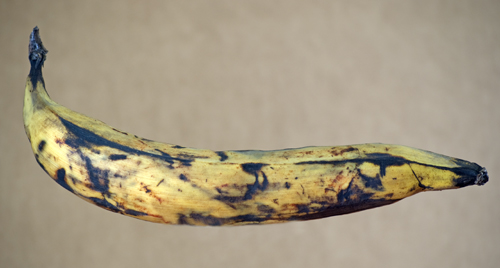
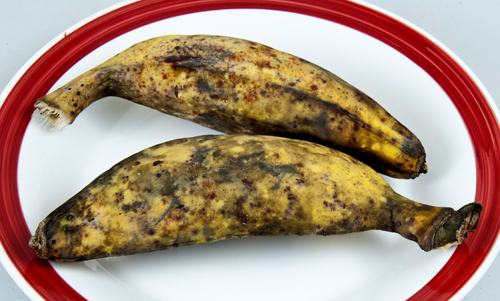
Chatos
Another variety of platano, known in Honduras as "chatos", is shorter, fatter and sweeter than the common macho. They have a fine flavor, and can be eaten fresh, but are usually cooked like their larger cousins.
Making the Humble Platano More Appealing
A favorite way to eat platanos in Latin America is in the form of tostones. After removing the peel, the fruit is cut into chunks and shallow-fried in oil to a more-or-less golden brown. Once the fruit is removed from the oil and drained, they are squashed into fairly thick little cakes which are once again fried in the oil to a crispy golden snack. Tostones are customarily served as a side dish along with chismol, but if the platano isn't overly sweet, they can be eaten with dip. Some cooks have a press, called a "tostonera", to make the tostones a uniform shape and thickness, but most just do it by hand. Some tostoneras have another side that will press the platano pieces into little cup shapes that can be filled with avocado, shrimp or other appetizer-type foods. They are especially good when filled with taco meat and topped with melted cheese.
The Crowning Glory of Platanos: Aborrajados!
I'm told aborrajados originated in Colombia. They are not widely known in Central America, but are received with great acclaim where-ever they are introduced. In my opinion, they are absolutely the finest way to serve platanos.
The best way to explain these wonderful treats is to offer a traditional recipe:
INGREDIENTS:
Ripe Platanos (not hard, but not soft ripe)
Quesillo, or shredded Mozzarella
Cooking oil
Batter (adjust the amounts for the quantity you wish to make):
2 Eggs, beaten
1/4 cup milk
4 tbsp flour
1 tsp vanilla
1 tbsp sugar
1/2 tsp salt
Peel the platano, and cut into four to six pieces, depending on size of the fruit. Shallow-fry the pieces in oil until lightly golden. Remove fried platanos and drain on paper towel.
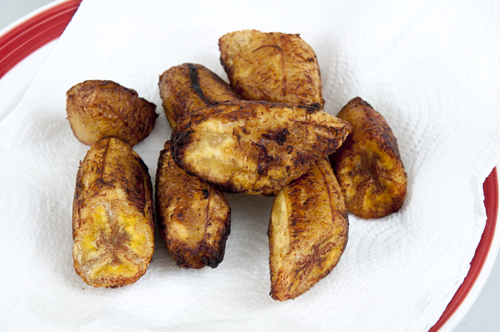
Mix the batter ingredients in a bowl, whisk until no lumps remain. Adjust the consistency of the batter by adding more flour if needed. You should be able to coat the pieces well without being runny. A little cinnamon could be added if you want to give it an extra kick for a sweeter treat.
Place a piece of the platano on a sheet of plastic wrap or aluminum foil, put another sheet over it, and press down with a flat object to make a pancake-like shape. Do this with all the platano pieces. Put some Mozzarella or Quesillo on one of the "pancakes", and cover with another so that the cheese is totally enclosed in banana. Dip these in batter to cover, and fry in oil again. A trick here is to not fry too fast. The cheese needs time to melt into a delicious gooey mass.
If you use Quesillo, taste it first, as some is salted and some not. If you have the salted variety, adjust the recipe accordingly.
Voila! A banana taste sensation!
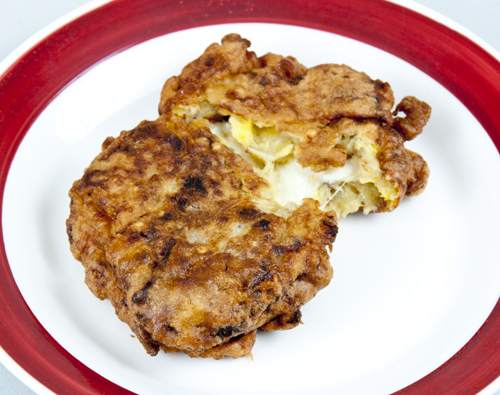
The slightly acidic taste of the cheese perfectly complements the sweetness of the banana, and the addition of a crispy coating makes these a true gustatory joy!
¡Buen Provecho!





